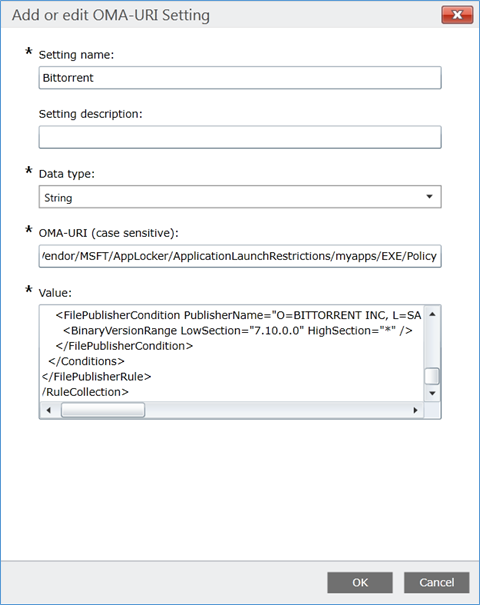

- APPLOCKER GROUP POLICY UPDATE
- APPLOCKER GROUP POLICY FULL
- APPLOCKER GROUP POLICY SOFTWARE
- APPLOCKER GROUP POLICY DOWNLOAD
- APPLOCKER GROUP POLICY WINDOWS
Most Windows administrators are already familiar with Group Policy, which makes AppLocker user experience seamless and natural. Second, AppLocker comes as an integrated part of Group Policy.

First, Microsoft includes AppLocker with the enterprise edition of Windows Server. AppLocker ProsĪppLocker has several significant benefits. This flaw is the inherent weakness of most whitelist solutions. Meaning, whitelists require constant maintenance and modifications. In reality, the list of authorized applications within most enterprises continually changes. Simplicity at its finest, at least in theory. The beauty of AppLocker is that if an extension isn’t on the whitelist, it doesn’t get opened. Malware stays at bay because you are limiting an end user’s potential to cause harm. Ultimately, when you use Windows AppLocker to whitelist applications, you are specifying the exact applications and. Maybe someone in the organization planted a file.A disgruntled user downloaded a trojan horse knowingly.User inadvertently clicked an arbitrary EXE file deposited onto their computer.
APPLOCKER GROUP POLICY DOWNLOAD
There are multiple ways that users can intentionally and unintentionally download malicious software. Application Whitelisting (AWL) is a Defence in Depth strategy that specifies the authorized applications for use within a computer network. Microsoft AppLocker provides out-of-the-box application whitelisting (AWL) capabilities that prevents users from running possibly dangerous applications. As a result, the antimalware community struggles to keep up. The bad guys use automation to generate and distribute malware variants. Albeit a considerable quantity, the number of new malicious exploits isn’t surprising. That equates to about four new malware samples every second. According to Infosecurity Group, researchers detected over 360,000 new malicious files in 2017. New malware strains pop up throughout the world today like weeds on a warm spring day.
APPLOCKER GROUP POLICY UPDATE


APPLOCKER GROUP POLICY FULL
You should always specify the full path to a file or folder when creating path rules so that the rule will be properly enforced.
APPLOCKER GROUP POLICY SOFTWARE
The publisher may be a software development company, such as Microsoft, or the information technology department of your organization. The extended attributes, which are obtained from the binary resource, contain the name of the product that the application is part of and the version number of the application. The digital signature contains information about the company that created the application (the publisher).


 0 kommentar(er)
0 kommentar(er)
